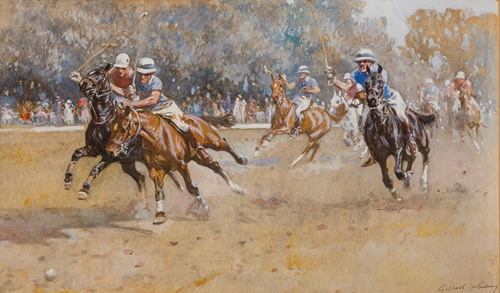Gilbert Joseph Holiday
Charles Gilbert Joseph Holiday was born in London in 1879. He was the son of Sir Frederick Holiday, and nephew of artist Henry Holiday, a painter and stained-glass designer. His mother was a watercolourist. He attended Westminster School, and it may have been during his time there that he observed at first hand the horses and troops of the Royal Horse Artillery, where he would later serve. Holiday studied at the Royal Academy of Art (1897–1902) and was distinguished for his ability to capture expression and movement, using an array of mediums such as charcoal, pencil, oils, pastels and watercolour. He began to produce commercial illustrations for magazines such as The Strand, The Tatler and The Graphic at the start of the twentieth century, whilst still producing works on canvas with oil paint.
A painting, entitled The Brewer’s Dray was accepted for the Royal Academy's exhibition of 1904 when Gilbert was only 25.
Holiday produced several paintings for regiments and units of the British Army during and after the First World War. During the 1920s and 1930s he began to focus on sporting scenes, painting every kind of equine subject including hunting, racing, polo, coaching, working horses and show jumping. He became famous for his paintings of national racing events such as the Grand National and The Derby. By the time of his death in 1937, Gilbert Holiday was considered one of the outstanding equestrian artists of his day.
